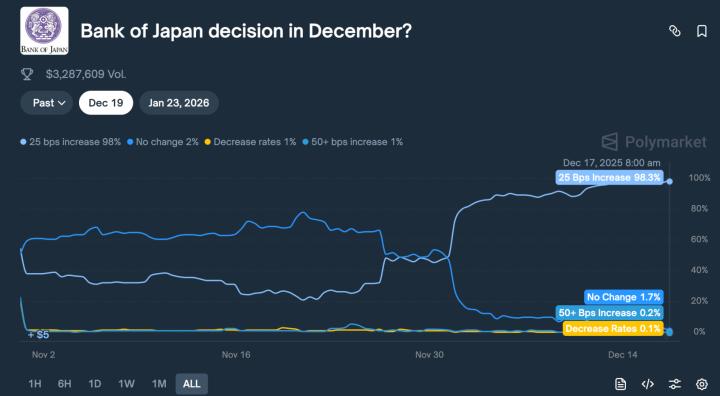This article is suitable for beginners to read.
Launched in July 2022, Radiant (RDNT) is a native lending market project on Arbitrum.
How is it different from AAVE
From a money market perspective, they are similar. The main difference is that Radiant (RDNT) is going to be a full-chain currency market. Users of Radiant can conduct Cross-chain lending on different chains it supports.
For example, users deposit ETH, GMX or MAGIC on Arbitrum (assuming there is Liquidity), they can borrow BNB on BSC, borrow SOL on Solana, borrow OP on Optimism, and borrow on Ethereum ETH etc. During this lending process, its users do not need to carry out Cross-chain operations of assets (for example, they do not need to deposit their ETH on Arbitrum into Optimism). In other words, from the user's point of view, borrowing and lending operations can be completed on different chains or L2 without Cross-chain assets to other chains.
At present, most lending protocols deploy different versions on different chains/L2, such as launching different versions on Ethereum L1, Arbitrum, Optimism, BSC, Solanan, Avalanche, etc. They are not interoperable with each other, and the Liquidity between each other is fragmented. To operate, assets must first Cross-chain.
The essence of the full-chain currency market is to integrate the Liquidity on different chains, reduce the operation troubles of ordinary users, and improve the utilization rate of assets. According to Defillama's data, as of the writing of Blue Fox Notes, the TVL of Ethereum L1 is about 60%, and the rest is distributed on various other chains. The loans and loans on these chains are carried out independently, and the Liquidity is separated.

(40% of TVL distributed outside Ethereum L1)
From a technical point of view, to simplify, Radiant (RDNT) uses LayerZero's Omnichain technology to build its full-chain interoperability.
In one sentence, Radiant (RDNT) tries to solve the problem of Liquidity fragmentation between different chains/L2, thereby building a full-chain lending market.
RNDT V2: Incentives for long-term contributors
Radiant currently plans to launch RDNT V2 in the next few weeks, which is also the part that the community is more concerned about. In short, the main points are as follows:

Radiant uses newly issued RDNT to incentivize borrowers and lenders. RDNT V2 introduces the concept of dLP (dynamic Liquidity Provisioning), that is, dynamic Liquidity provision.
To obtain incentives for additional issuance of RDNT, users must provide a certain amount of Liquidity, and the value provided by this Liquidity must be at least 5% of their total deposit value. Since the value changes dynamically, it is called dynamic Liquidity provision.
If the ratio of the provided Liquidity value is less than 5%, the additional issuance reward of RDNT will not be obtained. In this way, depositors must provide a certain proportion of Liquidity if they want to obtain the benefits of RDNT. On the one hand, it can lock a certain proportion of RDNT and increase its demand; at the same time, it can also improve the Liquidity of RDNT, so as to realize the symbiosis of contributors and long-term development interests of the agreement.

(RDNT introduces the concept of dLP)

Its purpose is to achieve a seamless Cross-chain experience, which is conducive to the integration of more new chains

In V1, the waiting period for users to extract RDNT is 28 days. During this period, if any time is advanced, it will be reduced by 50%, that is to say, 50% of the RDNT will be reduced in the last second of the 28th day.
In the V2 design, the vesting period is increased from 28 to 90 days, but its early exit will be reduced in a linear fashion. On the one hand, the vesting period is extended to reduce potential selling pressure; on the other hand, the reduction of penalties becomes more reasonable through the linear model.

In V2, only locked RDNT has the opportunity to obtain agreement fees; no incentives will be obtained after expiration.

In V1, the fee generated from the borrower will be distributed between the RDNT locker and the lender, 50% each; while in V2, 60% of the fee will be distributed to the RDNT locker, 25% to the lender, and 15% to the RDNT locker. % assigned to the DAO.
That is to say, the biggest beneficiaries of future protocol fees are the RDNT pledge lockers. If the protocol continues to develop, the more fees are generated, the more RDNT pledge lockers will earn more, which will drive more users to pledge RDNT, thereby generating a flywheel effect and promoting the development of the lending market. However, the reverse is also true, the flip side of the flywheel effect is a death spiral. In addition, 15% of the fee is allocated to DAO, which is used for future DAO development needs.
RDNT's current data

As of the writing of Blue Fox Notes, Radiant (RDNT) currently has an overall lending market size of around US$438 million.


At present, the cumulative fee given to RDNT pledgers is 5.62 million US dollars, that is, 50% of the fees generated by the agreement are distributed to RDNT pledge lockers.


According to the data of Defillama, the current TVL of deposited assets in Radiant (RDNT) is 126 million US dollars; if borrowed, pledged, and Pool2 are added, the overall TVL is about 470 million US dollars.

Judging from the above data, Radiant is already in a leading position in the Arbitrum lending market. If the full-chain lending market can be opened in the future, there is an opportunity to further increase the market size.
Finally, in the DeFi field, there are potential risks at any time, and this is something that needs to be considered. In addition to Radiant itself, Radiant is also a technology based on the Layerzero protocol. If there is a problem with Layerzero, it will also affect Radiant.
Recommended reading:
Blue Fox Notes|Advantages are not permanent, can Arbitrum become the king of L2?
The above content is excerpted and reproduced with the authorization of the partner Blue Fox Notes. Original title: " Radiant: Full Chain Money Market " )
Disclaimer: The article only represents the author's personal views and opinions, and does not represent the objective views and positions of the block. All content and opinions are for reference only and do not constitute investment advice. Investors should make their own decisions and transactions, and the author and blockers will not bear any responsibility for the direct and indirect losses caused by investor transactions.
"Blockchain Application Legal Summit Forum 2023"
 The annual industry forum event - " Blockchain Application Law Summit Forum 2023", hosted by Blockker and Argoblocks, and co-hosted by KryptoGO - will be held on April 7th. The Blockchain Application Law Summit Forum is the top forum brand of blockchain law in Asia. It collects the most urgent key issues in the industry every year and invites representatives from industry, government and academia to discuss. Discuss the legality of blockchain applications, and look forward to providing a legally friendly entrepreneurial development environment for global industry players at the beginning of technological development, and then settling in Taiwan to drive a new era of technological law.
The annual industry forum event - " Blockchain Application Law Summit Forum 2023", hosted by Blockker and Argoblocks, and co-hosted by KryptoGO - will be held on April 7th. The Blockchain Application Law Summit Forum is the top forum brand of blockchain law in Asia. It collects the most urgent key issues in the industry every year and invites representatives from industry, government and academia to discuss. Discuss the legality of blockchain applications, and look forward to providing a legally friendly entrepreneurial development environment for global industry players at the beginning of technological development, and then settling in Taiwan to drive a new era of technological law.
For details, please visit : blockchainlegalforum.com/
Early bird tickets are on sale now : bit.ly/3mgULzD







